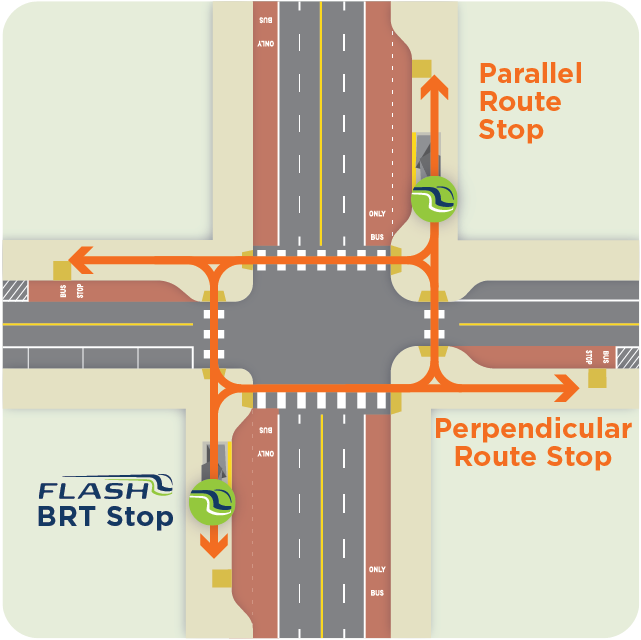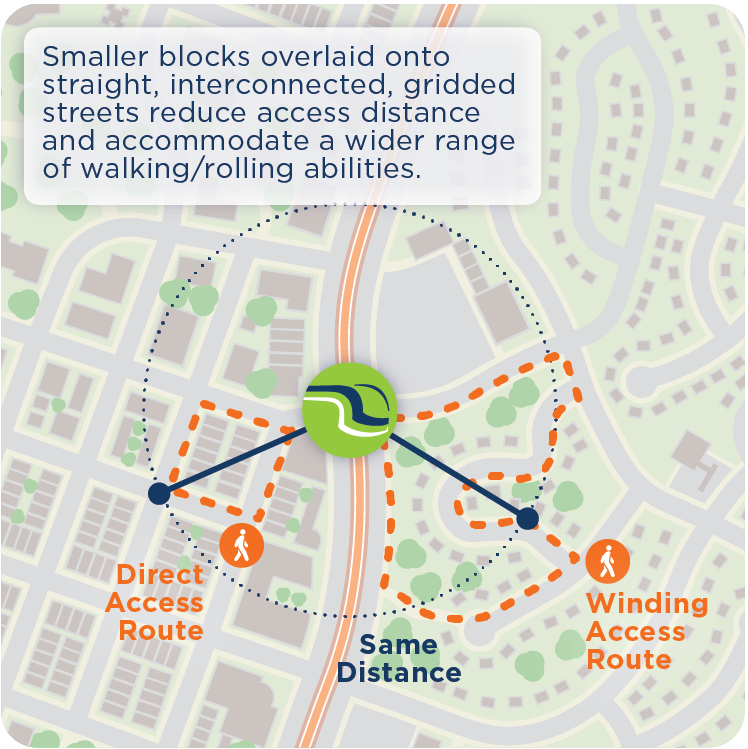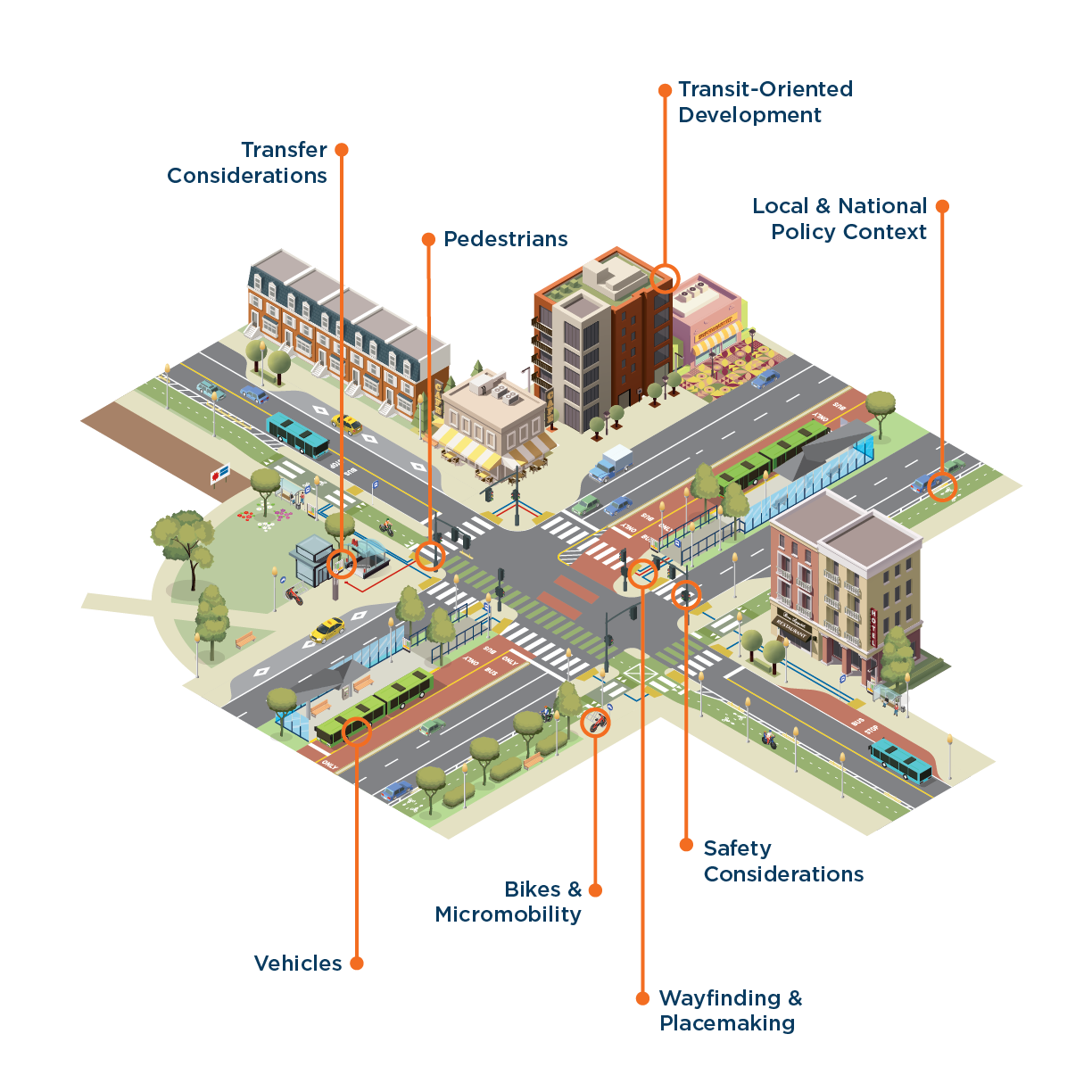Foursquare ITP led the development of the operating characteristics and station access design chapters of Montgomery County’s BRT Design Guidelines. Montgomery County is implementing a Bus Rapid Transit (BRT) corridor network that will be a critical component of future mobility in the county. Certain elements of the BRT program and service need to be defined at the systemwide level to provide consistency across corridors. The BRT guidelines aim to complement existing guides and set clear design guidelines, policies, and standard operating procedures for Montgomery County’s Flash BRT.
The guidelines respond to an increased focus on operations, maintenance, and safety given lately to ensure that corridors with excellent physical attributes and Intelligent Transportation Systems (ITS) also deliver safe and high-quality service to passengers. Informed by a review of BRT operations’ best practices and local transit service guidelines, the guidelines establish a framework for planning and operating Flash BRT services. The guidelines are context-driven and may vary to accommodate different operating contexts.
Regarding station access, we introduce multiple guidelines for effectively integrating Flash BRT stations into their built environments. Our guidelines ensure that pedestrians, cyclists, micromobility and microtransit users, transit vehicles, and private vehicles can all safely and efficiently access stations and that these modes can all safely interact with each other. We focus primarily on local access, which refers to the streetscape elements adjacent to or immediately around the station.



Solutions and Outcomes
- Developed context-sensitive operating characteristics for Flash BRT services to include travel speed, route length, station spacing, frequency of service, span of service, passenger load, service and travel time reliability, fare collection and boarding protocols, other services sharing a BRT corridor, and service reviews.
- Introduced multiple guidelines for effectively integrating Flash BRT stations into their built environments.
- Defined guidelines on pedestrian, bicycle and micromobility, and vehicle access; transfers and safety considerations; transit-oriented development; and wayfinding and placemaking.